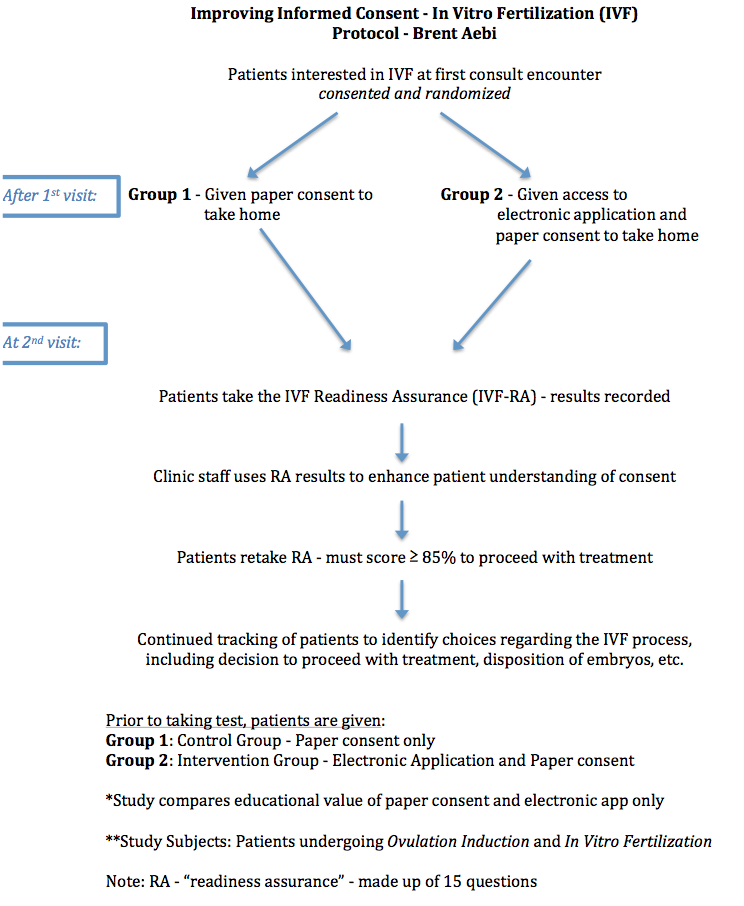Difference between revisions of "Informed Consent for User Comprehension"
(→Motivation and Background) |
(→Electronic Informed Consent Delivery: Process) |
||
| Line 3: | Line 3: | ||
==Electronic Informed Consent Delivery: Process== | ==Electronic Informed Consent Delivery: Process== | ||
| − | [[File:ivfTree.png]] | + | [[File:ivfTree.png|left|frame|50px]] |
==kHealth for Electronic Informed Consent Delivery== | ==kHealth for Electronic Informed Consent Delivery== | ||
Revision as of 16:26, 17 August 2015
Contents
Motivation and Background
The consent form for In Vitro Fertilization (IVF) is more than 17 pages long. In order for a patient to have the procedure of IVF, they must fully understand the risks associated with the IVF procedure. This project will try to present the IVF consent form information in a more appealing format. The hope is that giving the patients a website to view and interact with the consent form material, rather than just reading the text on a paper consent form, they will better understand the process and risks of an IVF procedure.
Electronic Informed Consent Delivery: Process
kHealth for Electronic Informed Consent Delivery
kHealth Observations
kHealth Vision
Digital health and mobile health applications are benefitting from semantic web research from Wright State's Ohio Center of Excellence in Knowledge-Enabled Computing (Kno.e.sis). Director of Kno.e.sis and Professor of Computer Science and Engineering Dr. Amit Sheth describes development of mobile health applications with sensor technology to monitor patient health, mobile computational support, and clear feedback to the patient and physician.
